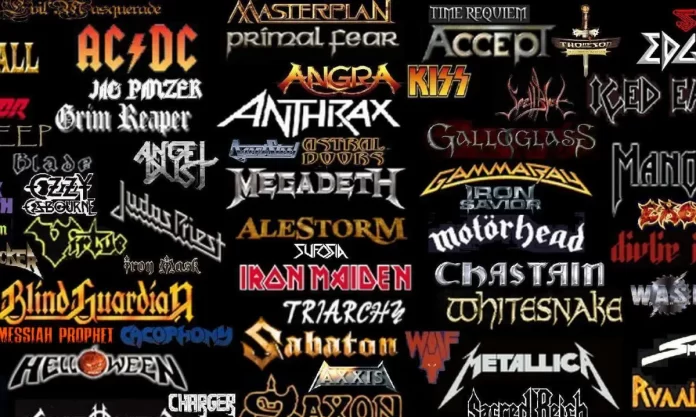As a blogger with a passion for metal music, I have been following the evolution of the genre for decades. Over the years, metal has developed into a diverse and multifaceted genre, with numerous sub-genres each with their own unique sound and influences.
Let’s explore the different sub-genres of metal, their origins, and bands that embodied these styles.
- Heavy metal, one of the earliest and most fundamental sub-genres of metal, is characterized by its powerful guitar riffs, loud drums, and soaring vocals. Bands such as Black Sabbath, Iron Maiden, Judas Priest, and Metallica are pioneers of this sub-genre.
- Thrash metal, on the other hand, emerged in the early 1980s, combining elements of punk rock and heavy metal to create a more aggressive sound. The lyrics often focus on social and political issues. Bands such as Slayer, Metallica, Megadeth, and Anthrax are known for their fast tempos and aggressive riffing.
- Death metal emerged in the mid-1980s, with a focus on guttural vocals, complex guitar work, and fast drumming. The lyrics often focus on death, gore, and other extreme themes. Bands such as Death, Morbid Angel, Cannibal Corpse, and Obituary are some of the pioneers of this sub-genre.
- Black metal, which emerged in the early 1990s, is characterized by its tremolo picking guitar technique, shrieked vocals, and its focus on pagan and anti-Christian themes. Bands such as Mayhem, Burzum, Emperor, and Dimmu Borgir are some of the most influential in this sub-genre.
- Power metal, which emerged in the mid-1980s, is characterized by its use of fast-paced guitar solos, soaring vocals, and fantasy-based lyrics. Bands such as Blind Guardian, Halloween, and Stratovarius are known for their grandiose sound and epic lyrics.
- Progressive metal emerged in the 1980s, with bands such as Dream Theater, Opeth, Tool, and Meshuggah taking a more experimental approach to metal, incorporating elements of jazz, fusion, and classical music.
- Doom metal, which emerged in the 1970s, is characterized by its slow tempos, heavy use of distortion, and melancholic lyrics. Bands such as Black Sabbath, Candlemass, Electric Wizard, and My Dying Bride are known for their mournful and depressive sound.
- Symphonic metal, which emerged in the mid-1990s, is characterized by its use of orchestral arrangements, operatic vocals, and epic lyrics. Bands such as Nightwish, Within Temptation, and Epica are known for their symphonic sound and epic lyrics.
- Folk metal, which emerged in the mid-1990s, is characterized by its use of folk instruments and melodies, combined with metal instrumentation. Bands such as Finntroll, Eluveitie, and Korpiklaani are known for their unique blend of folk and metal.
- Metalcore, which emerged in the late 1990s, combines elements of metal with hardcore punk, incorporating breakdowns and melodic choruses. Bands such as Killswitch Engage, As I Lay Dying, and Converge are known for their aggressive sound and emotional lyrics.
- Nu metal, which emerged in the late 1990s, combines elements of metal with hip hop, alternative rock, and grunge. It features down-tuned guitars, rapped or screamed vocals, and electronic samples. Bands such as Korn, Limp Bizkit, and Linkin Park are known for their unique blend of metal and other genres.
- Gothic metal, which emerged in the early 1990s, combines elements of metal with gothic rock, with a focus on gloomy lyrics and haunting melodies. Bands such as Paradise Lost, Type O Negative, and Lacuna Coil are known for their atmospheric and melancholic sound.
- Industrial metal emerged in the late 1980s and early 1990s, combining elements of metal with industrial music, featuring heavily distorted guitars, electronic samples, and processed vocals. Bands such as Nine Inch Nails, Ministry, and Rammstein are known for their aggressive and experimental sound.
- Alternative metal emerged in the early 1990s, blending elements of metal with alternative rock, featuring heavy riffs and introspective lyrics. Bands such as Faith No More, Tool, and Deftones are known for their unique sound and experimental approach.
- Stoner metal, which emerged in the early 1990s, is characterized by its heavy use of fuzz and distortion, often incorporating elements of psychedelic rock and blues. Bands such as Kyuss, Sleep, and Electric Wizard are known for their heavy and trippy sound.
- Sludge metal emerged in the late 1980s and early 1990s, blending elements of doom metal and hardcore punk, featuring heavily distorted guitars, slow tempos, and aggressive vocals. Bands such as Eyehategod, Melvins, and Crowbar are known for their brutal and raw sound.
Each sub-genre of metal has its own unique style and influences, but they are all connected by a shared appreciation for heavy, aggressive music. Over the years, metal has continued to evolve and diversify, with new sub-genres emerging and blending with existing ones. Some bands, such as Mastodon, Gojira, and Tool, incorporate elements from multiple sub-genres, creating their own unique sound.






























